 |
 |
 |
 |
 |
 |
 |
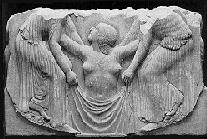 |
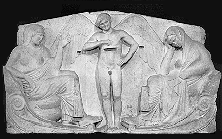 |
| The front panel of the Ludovisi Throne (left) has been broken away. The edge is preserved at the corners, indicating an upword slope, suggesting that the front may have had a gable like pediment, as in the Boston Throne, right. (This is shown on the diagram.) The peak on the front panel of the Boston Throne has been cut away. |
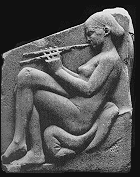 |
 |
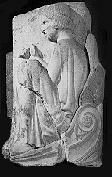 |
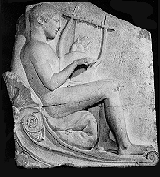 |
| The sloping sides on the short returns of the Ludovisi Throne (far left, left) appear to have been cut after the sculpture was completed as they interfere with the two sitting figures, cutting the contours of the priestess' hand, and the head of both figures. At the top of the sides is a small horizontal stretch, suggesting that the panels may have originally been rectangular. This is also the case on the Boston Throne, (far right, right.) On the Boston Throne, the panel with the old woman has been severely cut back, making the panel much shorter than the others. The figure is severely damaged and may have been reworked. These cuttings do not seem to be original. The similarity of the damage indicates that the Thrones were together when it occurred, or that the damage on the Boston Throne was made to replicate that of the Ludovisi Throne.
Other marks and indentations, it has been suggested, are the result of being dug up by crude iron tools, and being buried for a long time. W.J.Young suggested that the Boston Throne could be dated by a careful study of it's surface. |
 |
 |
 |
 |
 |
 |
 |